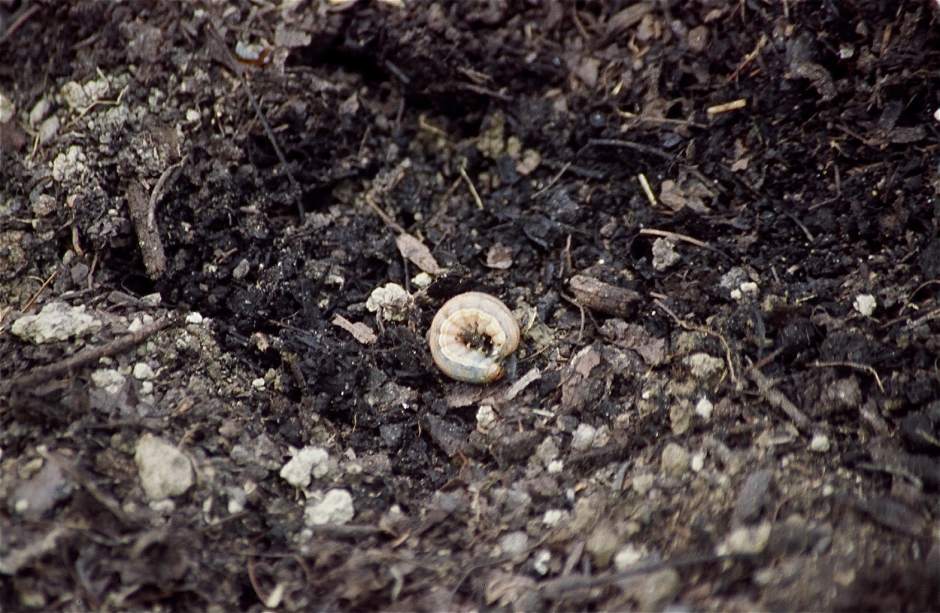Garden Q&A: Curtailing cutworms
Question: I had a big problem with cutworms in my garden last year. They chopped off all my snapdragon seedlings and a handful of my tomato plants at ground level. The snapdragons eventually re-sprouted, but the tomatoes died.
What can I do to prevent them from doing the same this year?
Answer: Cutworms, the larvae of numerous species of a family of night-flying moths, feed on a broad range of host plants, including nearly all vegetable and ornamental seedlings, grains and legumes. The existence of cutworms is most often noted by the presence of severed seedlings.
Because they feed at or just below the soil surface, cutworms readily chomp through plant stems, cutting the shoot system off at ground level, though some species of cutworms do not completely sever seedlings; instead, they girdle the outer stem tissue, causing the plant to wilt even when adequate moisture is present.
After lopping off the seedling, some species of cutworms eat the detached stalk, while others move on, leaving severed shoots littered about the garden. Young seedlings are the most vulnerable.
Cutworms actively feed at night. They can grow as long as 2 inches and curl into a distinctive, tight “C” shape when disturbed. The caterpillars can be green, brown, grey or yellow, depending on the species, and many have various stripes and markings on their smooth skin. Nectar-feeding adult moths are drab-colored with a wingspan of up to 1 1⁄2 inches. Females lay eggs on low-growing plants, and after feeding on foliage for a short time, the caterpillars drop to the soil where they hide during the day.
Below are a few things you can do to cut down on the population of this destructive pest.
• Till the garden in late fall to expose underground, overwintering pupae to freezing temperatures and predation by birds.
• Install a physical barrier around vulnerable seedlings. Collars of paperboard tubes or aluminum foil nestled around the base of each seedling and settled a half-inch into the soil will not allow cutworms to access the stem.
• Bait cutworms with cornmeal or wheat bran placed in sunken saucers throughout the garden. The caterpillars are attracted to the granules, but they cannot digest the cornmeal or bran and quickly die.
• There are many beneficial insects that use larval cutworms as a food source. Ground-dwelling beneficials such as spiders and ground beetles hunt for cutworms at night, while numerous species of parasitic wasps and tachinid flies use cutworm caterpillars as hosts for their developing young. Several studies show natural cutworm predation rates of up to 70 percent when pesticides are avoided and beneficial insects are encouraged by planting flowering herbs and annuals throughout the vegetable garden.
• Beneficial nematodes are another organism that can be employed to control cutworm infestations. Two species, Steinernema carpocapsae and Heterorhabdtis bacteriophora, are effective against cutworms. They target the caterpillars and the pupae and are mixed with water and sprayed onto the soil. Dusk is the best time for application, not only because the nematodes are killed by exposure to UV light, but because cutworms are most active at night. Applications of beneficial nematodes should take place in late spring or at the first sign of damage. They are available from various online sources, including Arbico Organics (www.arbico-organics.com) and Peaceful Valley Farm Supply (www.groworganic.com).
Horticulturist Jessica Walliser co-hosts “The Organic Gardeners” at 7 a.m. Sundays on KDKA Radio. She is the author of several gardening books, including “Attracting Beneficial Bugs to Your Garden: A Natural Approach to Pest Control” and “Good Bug, Bad Bug.” Her website is www.jessicawalliser.com. Send your gardening or landscaping questions to tribliving@tribweb.com or The Good Earth, 503 Martindale St., 3rd Floor, D.L. Clark Building, Pittsburgh, PA 15212.

